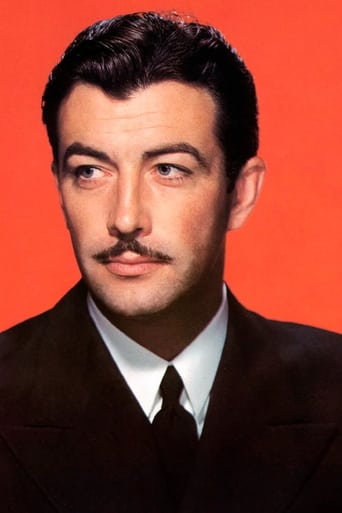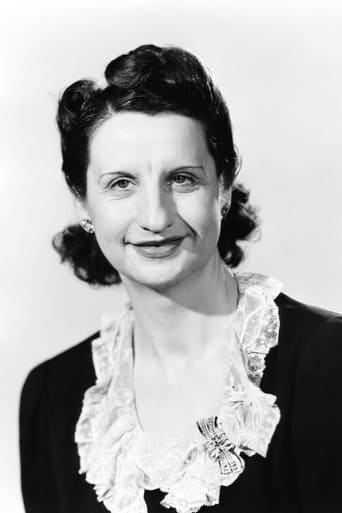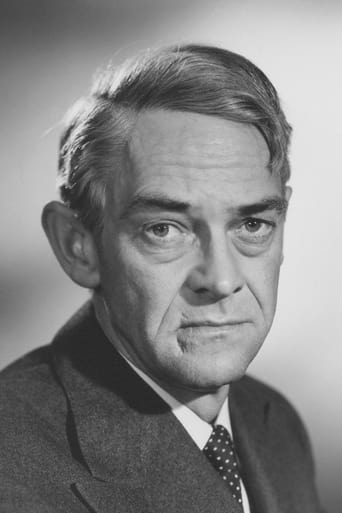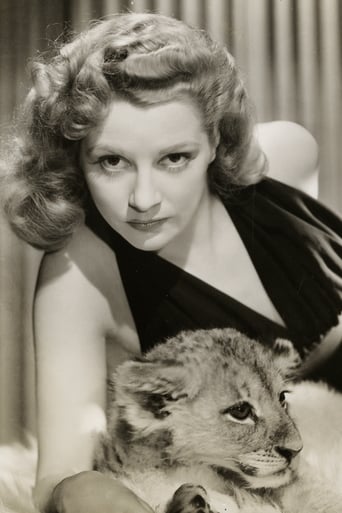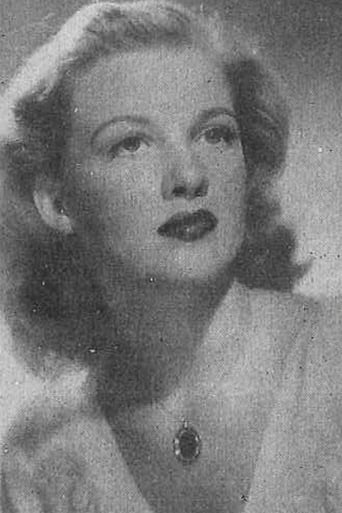Alicia
I love this movie so much
GrimPrecise
I'll tell you why so serious
Senteur
As somebody who had not heard any of this before, it became a curious phenomenon to sit and watch a film and slowly have the realities begin to click into place.
Cooktopi
The acting in this movie is really good.
Spikeopath
Westward the Women is directed by William Wellman and adapted to screen by Charles Schnee from a story written by Frank Capra. It stars Robert Taylor, Denise Darcel, John McIntire, Hope Emerson, Julie Bishop and Henry Nakamura. Music is by Jeff Alexander and cinematography by William Mellor.A most important Western, one that demands to be seen by lovers of the genre. Plot finds Taylor tasked with escorting over 100 women from Chicago to California, their goal is to find marital harmony at Whitman Valley. They must overcome extreme conditions, from that of the natural terrain, hostile invasions, and inner fightings via passions and suspicions. This is a wagon train of some difference.The key issue here is that this MGM production puts up front and centre the fact that women played a key part in the shaping of the frontiers. It manages to have the expected cute and funny scenarios, but not at the expense of viable assertive drama, nothing denigrates how strong, brave and driven these women were. Some of the gender politics look a touch suspect today, and occasionally some of the framing devices for the women are over staged. There's also the irritant of stereotyping Nakamura's Asian character, but these are small quibbles all told. For this is a unique and fascinating Western, something of a banner movie for telling a side of the "West" we hardly have ever see on film. 7/10
lrrap
DON'T BE DISCOURAGED, guys---"Westward the Women" is as intense and harrowing as any film from Hollywood's Golden Age, and is so well written, directed and photographed, that you feel as if you are a part of this rugged, dangerous journey, especially after the brutal, unyielding (and very reluctant) Robert Taylor ends up driving off the men who have signed on to guard the wagon train, leaving the women alone with him to face the elements, the terrain, AND the maruading Indian tribes.But these are no ordinary, stereotypical Hollywood women, and I predict that anyone who appreciates great film-making will find themslves entirely engrossed in their story....a story, incidentally, written by none other than FRANK CAPRA. So you can be sure that the HUMANITY quotient is very high indeed in this intimate yet epic drama.My only reservation is the obligatory romantic subplot between Robert Taylor and Denise Darcel, which occasionally distracts from the main story. And, yes, the comic relief scenes with Ito, the Japanese cook, do get a bit tiresome. But the vast majority of the film is a powerful testament to the courage and endurance of 19th-Century American women, with actress Hope Emerson---against all expectations--practically STEALING THE SHOW as the emotional "fortress" and Mother Earth figure of the intrepid band.Other than the lovely opening and closing musical theme (sung by a female chorus which still, in 1951, maintains that classic "heavenly" sound from Hollywood's Golden Age), there is NO MUSIC in the film, until the action specifically requires it in the final scene----and what a scene it is. I swear....when that little dance orchestra goes into "Drink To Me Only With Thine Eyes", I have to fight back the tears, every time. I wish that we would see a bit more of these wonderful ladies that we have to come to love and admire during this final scene (and a little LESS of the star romantic couple) but, again, it's a minor quibble.A first-rate film experience.
LR
MartinHafer
Between 1930 and 1960, 97% of all movies (that's 14729239520520 films) were westerns--or so it would seem. And, sadly, almost all of them have one of about five different plots and variations on these plots. Because of this, I really have very little patience with the genre--though I must admit that I have reviewed quite a few westerns. The ones I like are often ones that are somehow a bit better--despite the familiar plots, fine acting and direction make them watchable. Rarely, very rarely, do I see one that not only has fine acting, direction AND a novel plot--and all that is in "Westward the Women".The film begins in a remote part of the old west--so remote that there are no women for all the men. Because of this, the men hire a tough trail boss (Robert Taylor) to recruit the women and bring them toa small outpost. The problem, however, is that the only way is a long trek across the prairie--through Indian land and desert. These women sure have to be tough--otherwise they'll never make it. And, in fact, unlike any other western I can think of, many of the women DON'T.What also makes this a very good film are the nice little characters within the film. So it's NOT just a Robert Taylor film but excels because of the fine ensemble cast. One of the standouts is Hope Emerson--a brawny actress who made a name for herself playing gangsters and other scary characters.Overall, there's not a lot to dislike about the film and it's a nice little story about American history you don't normally hear. Worth seeing and a top-notch production--with a real lump-in-your-throat ending. Sweet, sentimental and exciting.
wes-connors
This film invites some questions regarding its premise: a mid-1800s California town has no women; so, Robert Taylor (as Buck) is hired to bring over 100 women across the country, to mate with the waiting men. Certainly, there were women closer at hand; but, in those days, there were not enough to go around. It does appear like there are absolutely no women in this town; otherwise, it's a fine looking place.Mr. Taylor is the leading man; he manages to always appear well-manicured, even in his beard. But, the real stars of the film are "The Women"; they are a collection of relatively lesser known performers, who are beautiful through their blood, sweat, and tears. "Westward the Women" is most refreshing in its portrayal of pioneer women as something more than damsel appendages; this film theme is not revolutionary, but it is not very often a focus. The women outperform Taylor and his men at every turn. Even when dead, they "move".Hope Emerson (as Patience) is the most welcome addition to the wagon train. Denise Darcel (as Fifi Danon) is the one to watch fall for Taylor. Interestingly, Taylor forbids any of his men to hook up with any of the women; when they inevitably do couple up, he shoots the men -- but, the rule changes after he succumbs to the sexual urge. Japanese "boy" Henry Nakamura (as Ito) is content with a dog. The dog is a real highlight; but, only makes a rare appearance after Mr. Nakamura retrieves it, from Tony's grave.The peak of the movie occurs after several of the men take eight women, and leave. This means the remaining women must become even more resourceful. During a shooting lesson, a tragedy occurs, which symbolizes the women's great challenge, and illustrates their great strength. The women eventually take over the mission and the decision making; of course, Taylor is proud. Director William A. Wellman and photographer William Mellor perform very well; the wagon mishaps are suspenseful, and Mr. Wellman heightens interest throughout. The film looks great either colorized, or in black and white; real 1950s color would have been a glaring error.

